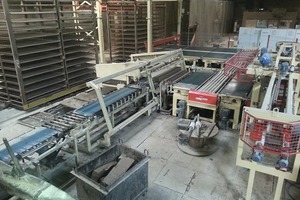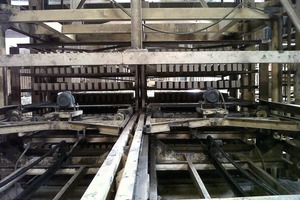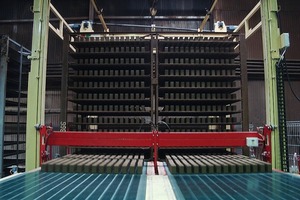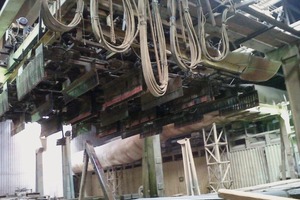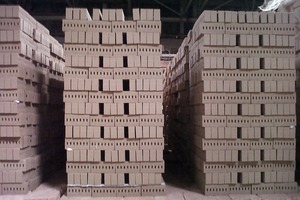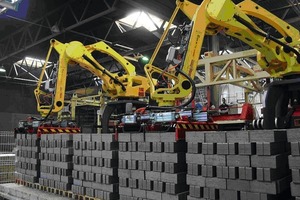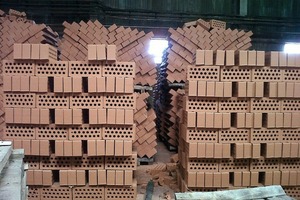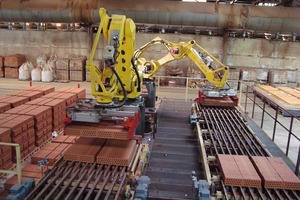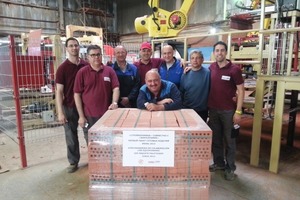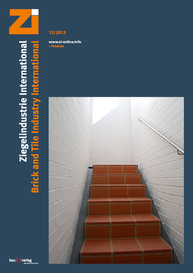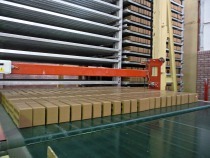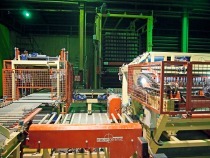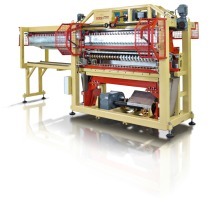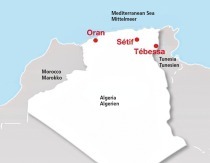In 2012 Stroykeramika, one of the leading brickworks in Novosibirsk, Russia, contracted the Spanish company Equipceramic with the upgrading of its production facilities. The factory established in 1988 was designed for a nominal capacity of 75 mill. standard-size building bricks per year. After 25 years of continuous operation, the production capacity of the factory had dropped significantly as a result of normal wear and tear, making modernization necessary.
1 Upgrading project
The upgrading project envisaged by the customer set the bar quite high since:
› �productivity was to be increased by 25% on the nominal capacity
› �the high requirements for the quality of the finished products, especially for facing bricks, called for some excellent technical solutions
› �the new machines were to be fitted into the existing workshops and as many machines as possible from the existing production line were to be reused
One crucial factor in winning the confidence of the customer was the solution offered by Equipceramic to install high-quality, state-of-the-art equipment while maximizing the number of machines from the existing line fitted in the workshop.
2 Technical solutions
2.1 Cutting line
The cutting line is equipped with two cutters. The first one cuts the clay column at the exit of the extruder and the downstream multi-wire cutter chamfers the bricks on three sides. To avoid any deformation of the side in contact with the conveyors, a device for taking off the excess clay is installed at the exit of the cutter. The chamfering depth and angle can be adjusted according to customer requirements. The cutter is equipped with Teflon-coated chamfering disks that are specially adapted to the Russian clays. It is equipped with a system for the automatic replacement of the wire-holding frame in the event of a wire break as well as a system for automatic wire cleaning. Special alloys have been applied to minimize friction in the cutting process. It has a nominal rate of 10 strokes/minute and therefore it is well adapted to the high production rate of the factory. The cutter can cut 2 x 15 products at the same time. Only 30 min. are needed for a product changeover, then the production process can be restarted.
Both the old cutting line and the new Equipceramic cutter are operated together. At present, solid products cut by the former cutter are conveyed to the Equipceramic dryer car loading area. The customer intends to replace the old cutter with another new one from Equipceramic.
2.2 Dryer car loading
For loading of the green bricks on the dryer cars, Equipceramic came up with a solution specially adapted to this plant. The equipment is divided into two groups: a belt conveyor loaded with a layer of products transports these to immediately in front of the dryer cars. There a motor-operated unit pushes the products on dryer pallets mounted on rollers onto the decks of the cars.
2.3 Setting machine
The old, heavily worn setting gripper had become very inaccurate, which led to many unscheduled interruptions.
Equipceramic therefore rearranged the setting line from dryer car unloading area to the setting machine. A solution was proposed to optimize the space in this area with belt conveyors and a 90° turning gripper. The line is equipped with turning devices to enable flat loading of facing products. Robots load the products, flat or on edge depending on the type of product, onto the kiln cars.
2.4 Unloading system
The products used to be dehacked by hand. Following the modernization two dehacking robots unload the products layer by layer from the kiln car and set them on two lines. A visual control is performed and two turning devices are installed.
Accurately synchronized buffers for layers of bricks allow two palletization robots to stack the same pallet. The wooden pallets are handled by one of the two robots. Two strapping machines apply four horizontal straps and two vertical straps.
A stretching film wrapping machine that can be used as needed completes the packaging unit.

